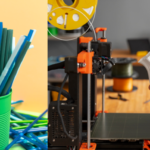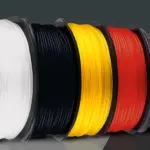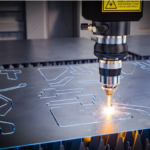Several industries use laser cutting technology. Why is laser cutting so popular? Find out why it’s so beneficial and why it’s so dangerous.
Laser cutting technology is widely used in many industries, and this article will provide you with the advantages and disadvantages of laser cutting.
Laser cutting is a type of technology that uses an optical device to cut materials.
It is most commonly operated in industrial manufacturing, but it is now being used by colleges, small enterprises, and amateurs.
The laser cutting method can be quite effective if good-grade laser parts are used.
However, it has some advantages and disadvantages, much like the other technical services.
The undeniable certitude “Today’s production would be impossible to run without the use of modern technologies.”
However, this procedure is reliable for any finished and semi-finished product.
Modern engraving substance finished or semi-finished needs cutting, which is now easily feasible due to modern laser technology.
This technology includes cutting the material with a laser beam assisted by inert gas action.
Table of Contents
What made laser cutting necessary?
Manufacturing and production processes have been evolving and inventing at an increasing rate around the world.
With the development, all procedures, and people which help drive change also need to develop as it emerges.
Despite the use of modern technologies, today’s production would be difficult to run.
Cutting is required for many of these finished goods. Laser cutting is essential for precision cutting.
While traditional cutting methods performed well, moreover we were in search of a procedure that was safer, more efficient, and more reliable, also could scale up to meet the expanding need for manufacturing and production.
Many industries, including automotive, aerospace, electronics, semiconductors, and medicine, have adopted laser cutting technology as a normal method.
How does laser cutting work?
“Laser,” is an acronym for “light amplification by stimulated emission of radiation.”
A laser is a powerful beam of light that is amplified by mirrors and lenses to cut through any material.
Laser cutting uses inert gases. Especially there is uses wide use of CO2 gas in this technology.
Talking about how laser cutting technology work? here’s your answer
- A laser resonator, which is an airtight glass tube with two mirrors facing each other and is filled with CO2 and other gases like helium, nitrogen, and hydrogen, produces the beam.
- An electric discharge or diodes activate the mixture of gases, which generate energy in the form of light, which is reflected back and forth by the mirrors.
- After being formed, the beam passes through the machine, bouncing in numerous directions with the help of other strategically placed mirrors until it reaches the laser cutting head.
- When the beam reaches the laser cutting head, it passes via a curved lens, which multiplies the laser’s power and concentrates it into a single point.
- Some features, such as the beam intensity and speed, can be adjusted to achieve laser cutting or engraving.
You have known about how laser cutting works and why it is needed.
Now, you might eagerly be waiting to know about the advantages and disadvantages of laser cutting.
Advantages of Laser Cutting
Non- contact process
This implies that the beam doesn’t actually touch the substance it’s working with; instead, heat is used to melt and cut the material.
This reduces material damage and eliminates costly repair and maintenance plans for moving parts that come into touch with the work surface.
Precision
When compared to other thermal cutting processes, one of the key advantages of laser cutting is accuracy.
With a precision of +/-0.1 mm, great precision can be achieved without any post-treatment.
In most circumstances, such a high standard eliminates the need for further tolerances.
Speed
Traditional mechanical cutting processes are much slower than laser cutting particularly in the case of more difficult cuts.
When compared to other thermal cutting processes such as plasma or flame cutting, laser outperforms them in terms of speed up to a thickness of roughly 10 mm.
However, the precise advantage point is determined by the laser cutter’s power.
Low power consumption
This is a significant benefit in a world where companies are striving to work smarter, not harder, by increasing output while cutting expenses.
A cutting machine consumes about 10kW of power, whereas other cutting operations consume roughly 50kW.
Flexibility
Laser cutting does not require an exchange of equipment for each separate cut.
Within the same material thickness, the same setup can be used to cut a variety of forms. Intricate cuts, on the other hand, are not an issue.
Versatility
A Laser will have no trouble cutting metal, diamonds, plastics, wood, glass, or a variety of other materials down to size or assisting in the creation of complicated and detailed shapes.
A lot of laser cutters aren’t just for cutting. Another application for this equipment is laser branding. And when it comes to common things, marking has a lot of uses.
Disadvantages of Laser Cutting
Energy
The most significant disadvantage of laser cutting is the amount of energy required to generate a laser beam.
Consumption of power and efficiency depends on the type of laser used for cutting and the type of cut that has to be made.
However, because laser technology is always changing and improving, this flaw will very certainly be addressed soon.
Need of Expertise
To make the most of a laser cutter’s capability, a specialized operator is required.
The appropriate configuration ensures that the cutting quality meets the high expectations that consumers have for this technology.
Dangerous Fumes
Simultaneously, the thermal cutting procedure causes the material to melt, resulting in produced gases and potentially toxic odors.
When cutting plastic, this is especially true. As a result, for a safe working environment, a good, although often expensive, ventilation system is required.
Inconsistent Production rate
Laser cutting isn’t compatible with all metals. Metals like copper and aluminum, for example, cannot be cut using this method.
The rate of production isn’t consistent. The type of material utilized, the thickness of the workpiece, and the nature of laser cutting all play a role.
Costly
The cost of a laser cutting machine might exceed £1,000,000. When compared to waterjet or plasma cutters, lasers can be twice as expensive.
The initial expenditure is still rather substantial, even though the operating expenses and efficiency make up for it in the long run.
Conclusion:
This type of technology and machine is very important in modern industry.
It not only helps us achieve our goals in a flattering manner, but it also saves us time and, ultimately, money.
The use of 2D and 3D cutting technologies is prevalent since they are a very advanced manner of machining.
Lasers are used to treat vehicle bodies, in the aerospace sector, and to cut exotic materials such as titanium, aluminum, and chrome.
Non-metals are also processed with laser cutting equipment, which will expand the technology’s application.
Just like any other technical service, laser cutting technology is believed to have more improvements in days to come.
Laser cutting technology is already accepted and preferred by the industry and with new improvements, this technology will take over the world.
Comment down below if this article helped you and to motive us. Let’s work together for the betterment and detailed work!
FAQ
What kind of materials can be cut using a laser cutter?
Materials like wood, plywoods, glass, ceramics tile, anodized aluminum, painted or coated metals, Paper, Cardboard, Polycarbonate sheeting, Stone, Marble, Granite, Soapstone, Onyx are safe to be cut using laser cutting.
What things are unsafe to cut using a laser cutter?
PVC, artificial leather, Fiberglass, milk bottle plastics, Coated Carbon fiber, PolyStyrene Foam, and PolyPropene Foam are unsafe to cut as these kinds of materials catch fire and emit harmful fumes.
How thick of materials can Laser cutter cut?
While some laser cutters can cut material up to 20 mm thick, most machines work with materials that are between 0.5 and 12 mm thick, depending on what’s being cut.









